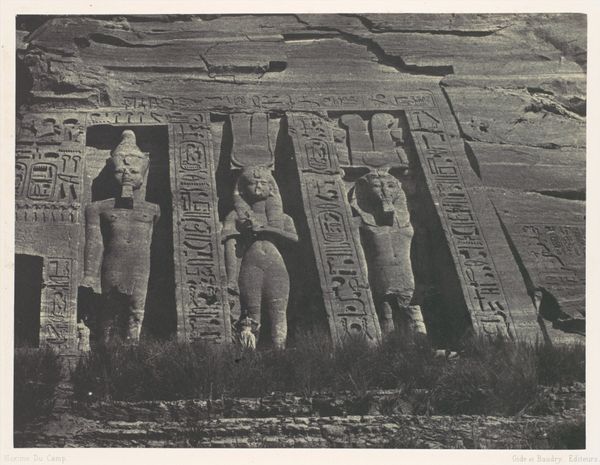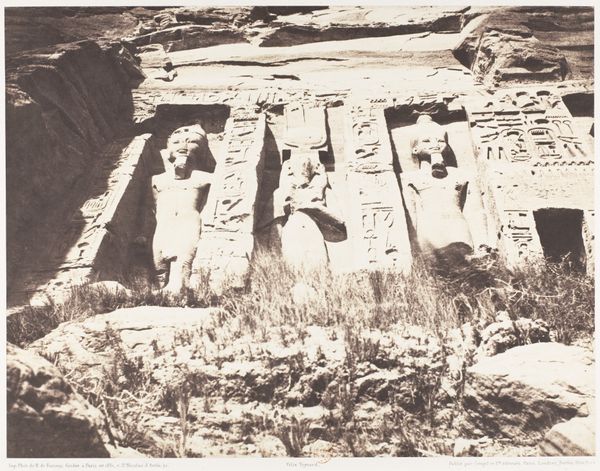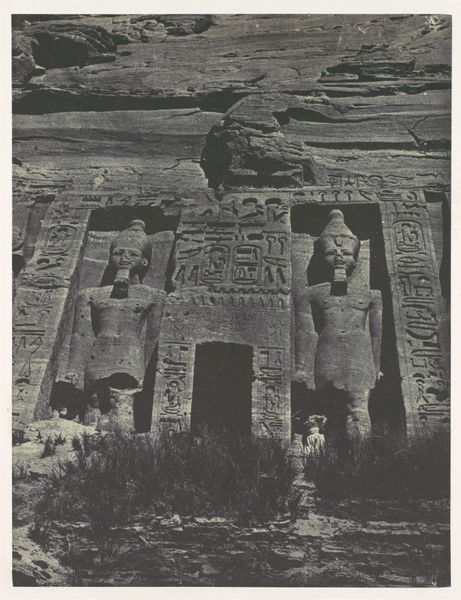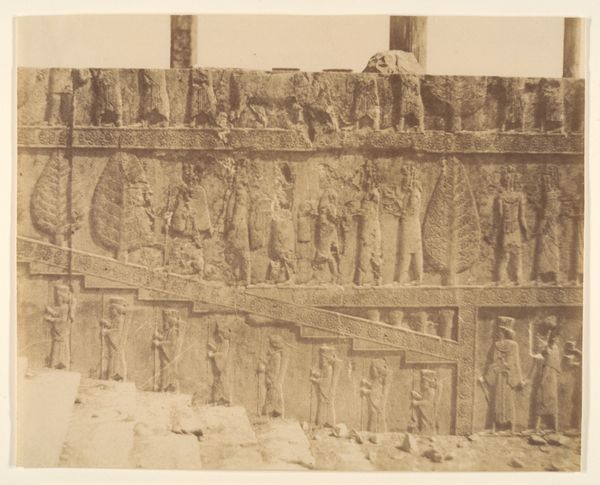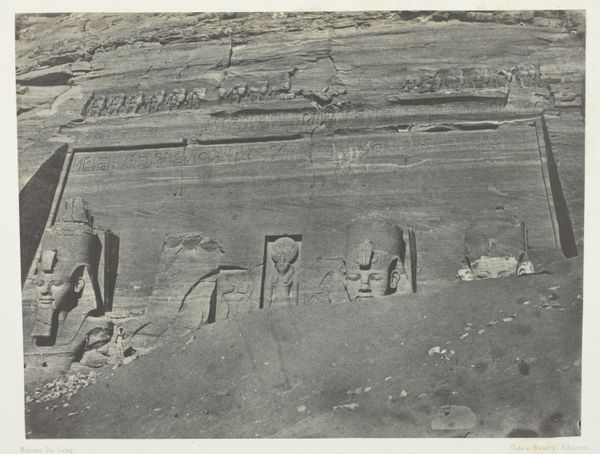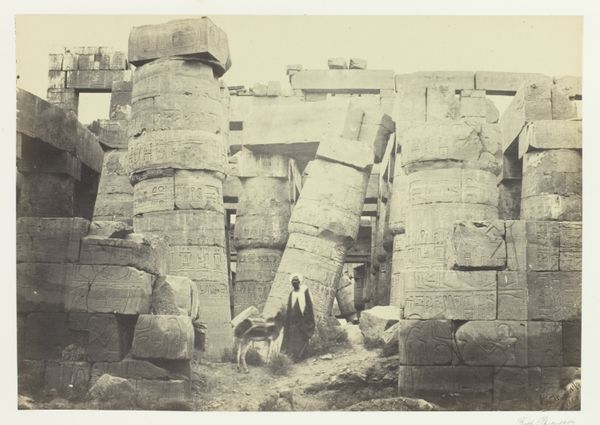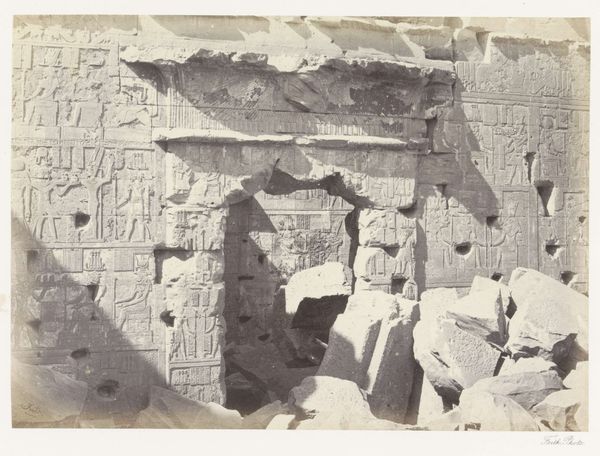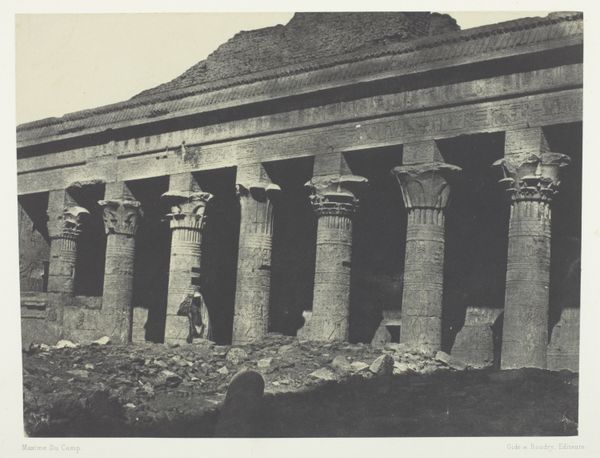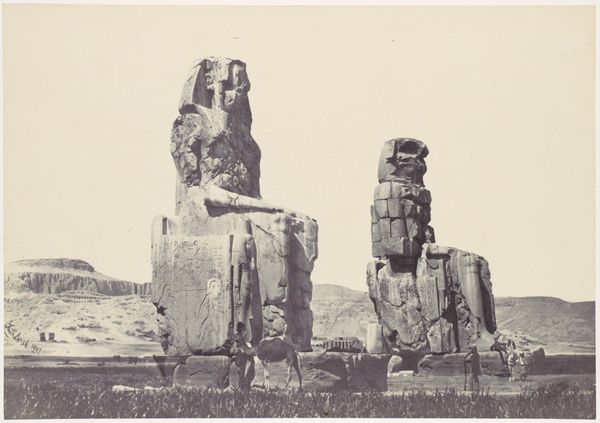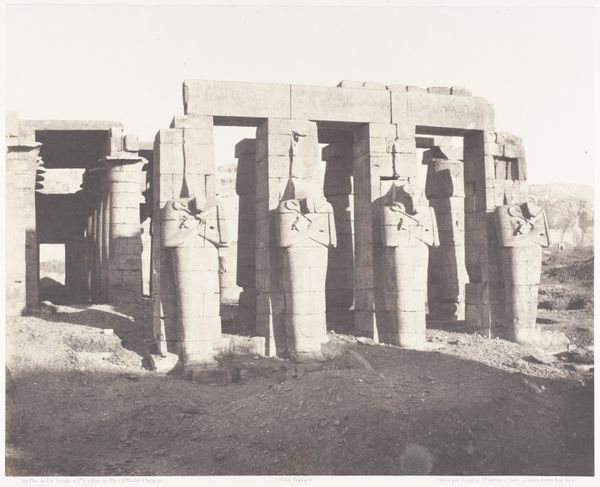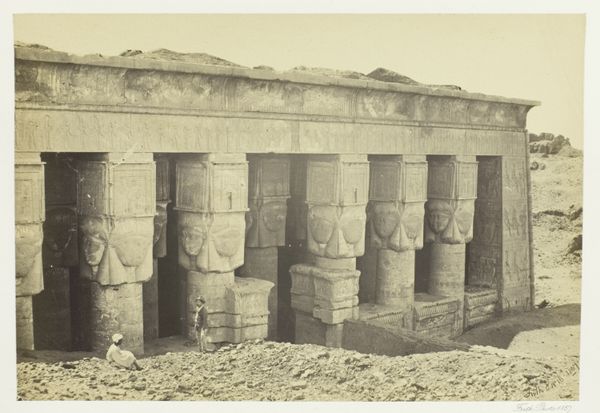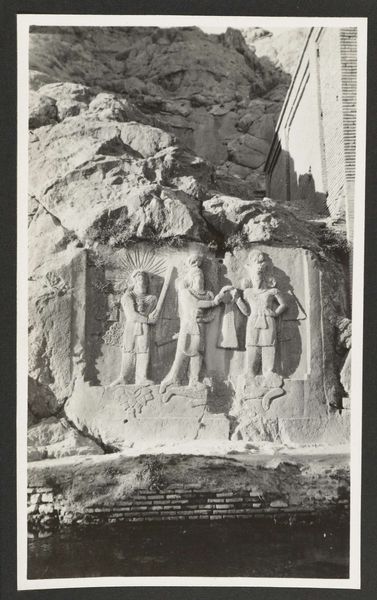
Ibsamboul, Partie Méridionale Du Spéos D'Hathor; Nubie Possibly 1849 - 1852
0:00
0:00
print, paper, photography
#
16_19th-century
# print
#
war
#
ancient-egyptian-art
#
paper
#
photography
#
egypt
#
ancient-mediterranean
#
france
Dimensions: 16.5 × 21.8 cm (image/paper); 30 × 43 cm (album page)
Copyright: Public Domain
In this photograph, Maxime Du Camp captures the southern part of the Temple of Hathor at Abu Simbel in Nubia. Du Camp's work, created in the mid-19th century, is more than just an image; it's a document reflecting the dawn of Egyptology and the colonial gaze of the time. Consider the context: Europe was gripped by Egyptomania, fueled by archaeological discoveries and imperial ambitions. Photography, a relatively new medium, offered a seemingly objective way to record and possess the ancient world. Du Camp, commissioned by the French government, participated in this endeavor, framing the monumental architecture through a lens that emphasized grandeur and exoticism. But what does it mean to represent a culture through the eyes of another? How does the act of photography itself shape our understanding of history? These are crucial questions when we engage with images like this, reminding us that every photograph is a product of its time, shaped by social, political, and institutional forces. To fully understand this image, we turn to travelogues, colonial archives, and the emerging field of Egyptology.
Comments
No comments
Be the first to comment and join the conversation on the ultimate creative platform.
